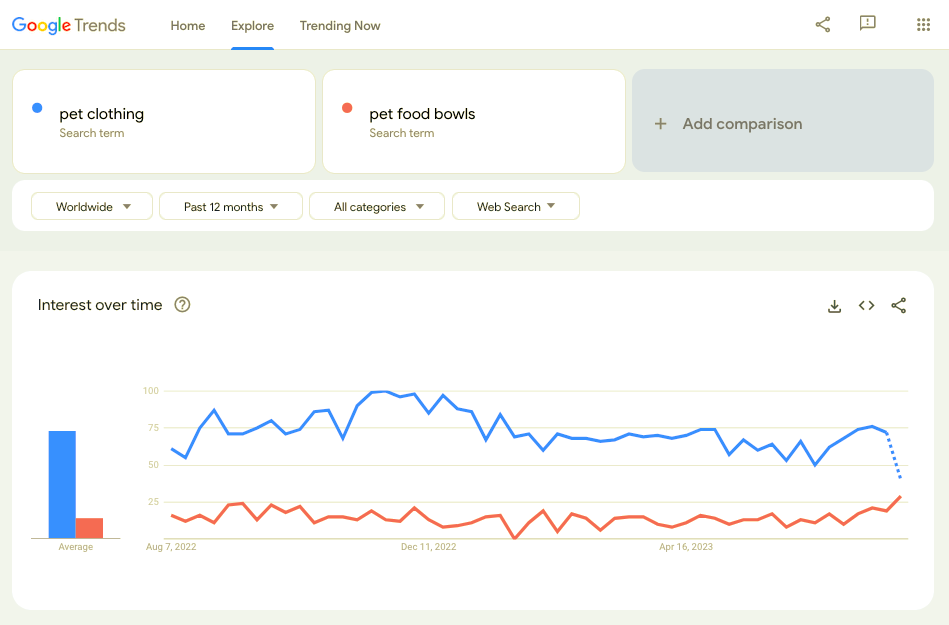It’s tough to create content that stands out. The Internet has been around since the 1980s, and in the decades since, we’ve worn out every topic and type of content under the sun. From listicles and how-to guides to podcasts and motivational social media posts, we’ve seen it all. You’ve probably done it all.
Your target audience is tired of it and so are you. Is it even possible to create unique content for SEO anymore? Or are we doomed to recycle the same tired stuff forever?
Whether you’re a blogger, a podcaster, an influencer, or any other type of content creator, you’ll be happy to know the answer is yes.
What makes content original?
To craft original content, you have to say something that hasn’t been said before. Or if that’s not possible, you’ve got to find a way to give weary content a fresh spin.
So what does this look like in real life?
Say you want to write an article about patio furniture Gen Z and Millennials will actually buy. Your company makes sustainable, stylish, and comfortable patio furniture fit for any younger person’s front porch. And you want your target market to know about it.
You need the article to hit some top keywords and highlight your products alongside those of worthy competitors.
You could look at popular posts that are already on the web and paraphrase from those to get your answers.
But rehashing these viewpoints wouldn’t give you any new, great content. You have to figure out how to be a thought leader no matter what you’re writing. To create new content, you’ll need to find unique ideas and approaches that reflect your voice and vision.
In other words, you have to go beyond repackaging content from around the web.
Here’s how to get started on original content creation.
How to create original content, step-by-step
1. Find your voice and tone
Every content creator needs to find a voice that feels comfortable and genuine. But what is voice, exactly? What about tone? They sound like something you learned about long ago in a high school English class. Maybe they’re something you’d rather not think about.
But tone and voice are actually pretty simple: voice is the personality of your brand. Tone is the mood you set in a piece of content.
You probably already have a brand voice to work with. If not, here’s how to find it:
- Understand your brand’s core values. You’ll want to reinforce and reflect these values in every piece of content you write. What does your brand stand for? Who does it serve? What are its goals?
- Get to know your target audience. Know who you’re speaking to. Analyze your target audience’s demographics, interests, and behaviors. What language and tone resonate with them? Your brand voice should speak directly to your audience’s needs and preferences.
- Study your existing content and communications. Look for patterns in tone, language, and style. Identify what makes your brand stand out from others. What characteristics and quirks make your brand unique?
- Create a brand voice chart. Develop a chart that outlines your brand’s personality traits. Think of your brand as a person. Is it authoritative or nurturing? Creative or traditional? For each trait, describe how it translates into your communication. For example, if your brand is playful, your voice might be fun, humorous, and lighthearted.
- Develop brand voice guidelines. Based on the brand voice chart, create guidelines that include do’s and don’ts for your brand voice. Include examples of words and phrases to use or avoid. Tell your team how to structure messages. These guidelines make sure your content strategy is aligned with your brand voice, from email marketing to posts on social media platforms.
Once you know your brand voice, you can experiment with different tones for each type of content. Blog posts or long-form articles might be conversational but informative. Social media posts might have a lighter, informal tone. White papers might read with a more serious air.
But all of them should reflect your brand voice. And that voice should be unique.
2. Brainstorm ideas and keywords
One of the easiest ways to find ideas for your content writing strategy is to do keyword research.
All you need is one little seed word or phrase to get you started, and then – wham! Hello, content ideas.
We’ll pretend we’re the head of content marketing for that outdoor furniture company that wants to connect with Millennial and Gen Z customers. We want to write a series of blog articles and social media posts that highlight the benefits of outdoor furniture. Or, more specifically, outdoor furniture that doesn’t look like it belongs on grandma’s porch.
So we head over to Ahrefs and enter outdoor furniture into the search box.
These keywords tell us a few things. First, modern outdoor furniture is, indeed, a keyword that gets searched. So it is the best outdoor furniture – no surprise there. The Target outdoor furniture and Ikea outdoor furniture keywords tell us who some of our top competitors are.
Next, we do a good old-fashioned “People Also Ask” search on Google.
There’s honestly not a ton going on for the input modern outdoor furniture for Millennials and Gen Z. This means we can jump in with some fresh content, and we’ve got a good chance of winning organic traffic.
Based on our keyword research, we decided to write a post titled, “What do Millennials and Gen Z look for in outdoor furniture?”
We’ll weave in keywords like modern outdoor furniture, best outdoor furniture, and others.
But now that we’ve done the idea generation part, it’s time to find unique perspectives for our blog post.
3. Do original research

We know, we know. This step sounds super scary.
But the research we’re talking about here isn’t the sciency stuff that takes thousands of dollars and hours of effort. If you like that type of research, great! If not, don’t worry. You won’t have to do it.
Instead, consider doing research in a way that’s affordable and intriguing: forums and different survey types.
These days, there’s a Reddit forum or Facebook Group for everything.
Take Reddit, for instance. As a patio furniture company, we could head over to r/Furniture, r/HomeDecorating, r/Homeowners, r/BuyItForLife, and r/Frugal.
We could then ask a question like, “Hey Millennials and Gen Zs who own or rent homes – do you use patio furniture? Why or why not? What types do you dislike and what do you gravitate toward?”
We could ask the same thing on Facebook groups dedicated to outdoor furniture and living spaces. We might get some pretty colorful answers. Or we might get nothing much at all because forums can be a crapshoot.
The other downside to this research method is the barrier to entry. Most Facebook groups require you to answer a few questions before joining. You must also follow specific rules.
On Reddit, you’ll need to create an account before you can post any comments or questions. You might also need to build up a post history for the moderators to look at before they approve your first post.
Another option is to run a poll on a platform like PickFu. This is our favorite way to do the type of research we need to create original content.
We do it all the time! In fact, we’re about to do a little case study using PickFu right now.
A PickFu case study
To recap before we begin:
- We’re pretending to be an outdoor furniture company
- We want to emphasize that our outdoor furniture is stylish and modern
- We’ve decided to write an article called, “What do Millennials and Gen Z look for in outdoor furniture?”
To find original content, we head over to PickFu and create a poll. Our question is this: “What do Millennials and Gen Z look for in outdoor furniture?”
In the question context box, we expand on the question: “Whether you rent or own a home, do you use outdoor furniture at all? If so, do you look for specific features, like sustainability, style, or materials used?”
We create a custom audience of 50 people in the following age groups:
- 18-24
- 25-34
- 35-44
Then we run the poll.
Within a day, we’ve got 50 detailed responses we can use for our article. These voices are completely new and fresh. Here’s what some of the Millennials and Gen Z homeowners and renters have to say about outdoor furniture:
- Male, age 35-44: “I do [use outdoor furniture], and honestly I mostly look at durability since I want items that will last a long time. I’m not a fan of using flimsy plastics that break quickly, and want something that will endure without a lot of maintenance.”
- Male, age 35-44: “I am a millennial, and when it comes to outdoor furniture, I like minimalism in design. I like something that is casual and made with durable materials. Reclaimed wood is popular with my demographic. Also, I think overall the biggest consideration is ease of use and maintenance. I need something that doesn’t need much in the way of care or special storage.”
- Female, age 35-44: “I think for Millennials and Gen Z, the most important thing we’re looking at first is price. Something needs to be affordable because we’re all broke as a result of inflation. Style is the second important thing because we want to enjoy the things we own and look at. The third attribute we’d appreciate would be longevity, because ideally the pieces would last us a bit so we could stretch our money.”
- Male, age 25-34: “As a Millennial, I’m looking for outdoor furniture that fits my lifestyle and expresses my identity. I want something that I can take with me from apartment to apartment, is durable quality (which is good for sustainability). I don’t want some cheap junk that I’ll have to replace eventually. I want something that’s comfortable and will grow with me into the next part of my life.”
These are just four of the 50 comments we get back. The AI summary at the top of the page helps us distill the things we’ve learned into three main points. Gen Z and Millennials want outdoor furniture that’s:
- Durable
- Affordable
- Sustainable
Style came up in several responses, but it definitely took a backseat to these three key points.
We’ll focus on these characteristics in our post. We make a plan to weave quotes from our respondents into the article to support our points.
The cool thing is that with PickFu, we can use this one survey to help create content in all sorts of different formats.
We can use the quotes in our article – and best of all, we don’t have to tiptoe around plagiarism avoidance because PickFu users reserve the right to use the comments PickFu respondents give. We can create an infographic using the demographic reports and filters.
We can also pull individual quotes to use for our digital marketing efforts on LinkedIn, Facebook, and Instagram.
We can even use the responses from this single poll to create audience personas that inform the evolution of our products.
For instance, we thought Millennials and Gen Z would care a lot about style. We were going to write a whole series of posts about how our furniture isn’t the type your grandma had.
But it turns out style isn’t as important as durability, affordability, and sustainability.
As a (pretend) outdoor furniture company, we decide to emphasize these aspects of our products over style. We also decide to put extra effort into making sure they live up to the expectations Millennials and Gen Z have.
You can bring the same authenticity in writing to your company with a single PickFu poll, too.
4. Polish and publish
The final step of creating original content is to make sure your research is woven in naturally – in a way that makes sense and supports the key point of the social media post, article, webinar, or email newsletter.
Have trusted peers read your content. Ask them if it feels fresh and original. Does it keep their interest? Do they learn something new by reading it that they didn’t before?
Incorporate any feedback that strengthens your piece and leave the rest out. Make sure you add backlinks to other content on your site, along with those keywords you researched back in step two.
But rest assured that your unique, original content will get readers’ attention – and the search engine algorithm gods will love you for it. Originality is one of the best types of SERP optimization.
So start these four steps today and watch your content writers blossom under the simple, straightforward process. When you’re ready for the research step, PickFu will be there to deliver the original insights your content needs to stand out.
Our Open-Ended and Ranked polls are a great place to start.
FAQs
How do you create real content?
Real content is writing that’s fresh and original. You can create it by exploring topics you’re passionate about and that resonate with your audience. Use PickFu for original responses and insights that only you can bring to the table. This type of research will set you apart from your competitors.
How do I start creating content?
The first step is to find your brand voice. You can do this by taking a hard look at your brand’s values and how they resonate with your target audience. Next, brainstorm ideas and keywords using tools like Ahrefs. This helps you uncover what your audience is interested in and helps with optimization, too. Finally, do original research with platforms like PickFu. In a saturated digital landscape, original content is the only way to get seen.



